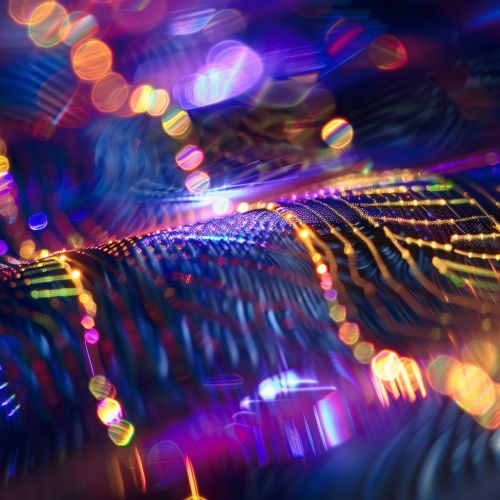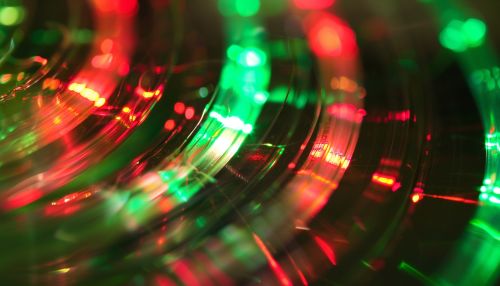Electroluminescence
Introduction
Electroluminescence (EL) is an optical and electrical phenomenon where a material emits light in response to an electric current passed through it, or to a strong electric field. This is distinct from black body light emission resulting from heat (incandescence), from a chemical reaction (chemiluminescence), sound (sonoluminescence), or other mechanical action (mechanoluminescence).
History
The phenomenon of electroluminescence was discovered in 1907 by the British experimenter H. J. Round of Marconi's labs, using a silicon carbide crystal and a cat's-whisker detector. Soviet inventor Oleg Losev reported creation of the first LED in 1927. His research was distributed in Soviet, German and British scientific journals, but no practical use was made of the discovery for several decades.


Mechanism
Electroluminescence is a result of radiative recombination of electrons and holes in a material, usually a semiconductor. The excited electrons release their energy as photons - light. Prior to recombination, electrons and holes may be separated either by energy, as in a light-emitting diode (LED), or by physical distance, as in a photovoltaic cell. The impact of an electron on an atom can also excite an electron from its ground state into a higher energy level.
Types of Electroluminescence
There are several types of electroluminescence, including:
- Injection electroluminescence: This type of electroluminescence is observed in forward-biased pn junctions in a semiconductor, as in LEDs.
- Inorganic electroluminescence: This type of electroluminescence is observed in phosphor materials subjected to alternating electric fields, as in EL lamps.
- Organic electroluminescence: This type of electroluminescence is observed in organic light-emitting diodes (OLEDs).
Applications
Electroluminescence has found widespread application in many areas of technology, including:
- Light-emitting diodes (LEDs): These are the most common application of electroluminescence. LEDs are used in a wide range of applications from lighting to televisions to traffic signals.
- Organic light-emitting diodes (OLEDs): These are used in display applications, such as mobile phones, computer monitors, and televisions.
- Electroluminescent wires: These are often used in automotive and computer applications for backlighting.
- Electroluminescent displays: These are used in watch faces and small displays.
